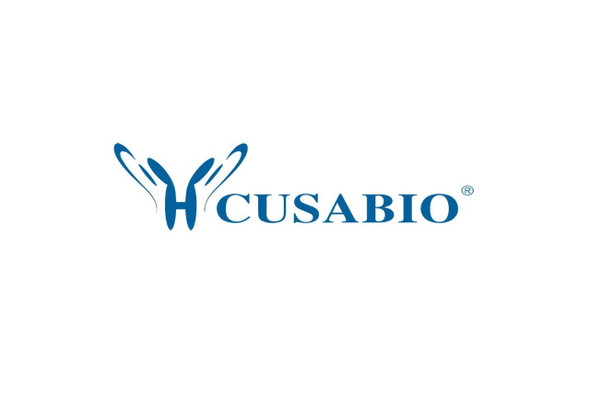Cusabio Rattus norvegicus Recombinants
Recombinant Rat Cyclic AMP-dependent transcription factor ATF-4 (Atf4) | CSB-CF880648RA
- SKU:
- CSB-CF880648RA
- Availability:
- 18 - 23 Working Days
Description
Recombinant Rat Cyclic AMP-dependent transcription factor ATF-4 (Atf4) | CSB-CF880648RA | Cusabio
Alternative Name(s): Activating transcription factor 4
Gene Names: Atf4
Research Areas: Epigenetics and Nuclear Signaling
Organism: Rattus norvegicus (Rat)
AA Sequence: MTEMSFLNSEVLAGDLMSPFDQSGLGAEESLGLLDDYLEVAKHFKPHGFSSDKAGSSEWLAMDGLVSASDTGKEDAFSGTDWMLEKMDLKEFDFDALFRMDDLETMPDELLATLDDTCDLFAPLVQETNKEPPQTVNPIGHLPESVIKVDQAAPFTFLQPLPCSPGFLSSTPDHSFSLELGSEVDISEGDRKPDSAAYITLTPQCVKEEDTPSDSDSGICMSPESYLGSPQHSPSTSRAPPDSLPSPGVPRGSRPKPYDPPGVSVTAKVKTEKLDKKLKKMEQNKTAATRYRQKKRAEQEALTGECKELEKKNEALKEKADSLAKEIQYLKDLIEEVRKARGKKRVP
Source: in vitro E.coli expression system
Tag Info: N-terminal 10xHis-tagged and C-terminal Myc-tagged
Expression Region: 1-347aa
Sequence Info: Full Length
MW: 45.6 kDa
Purity: Greater than 85% as determined by SDS-PAGE.
Relevance: Transcription factor that binds the cAMP response element (CRE) (consensus: 5'-GTGACGT[AC][AG]-3') and acts both as a regulator of normal metabolic and redox processes, and as a master transcription factor during the integrated stress response (ISR) (By similarity). Binds to asymmetric CRE's as a heterodimer and to palindromic CRE's as a homodimer (By similarity). Core effector of the ISR, which is required for adaptation to various stress, such as endoplasmic reticulum (ER) stress, amino acid starvation, mitochondrial stress or oxidative stress. During the ISR, ATF4 protein is translated in response to eIF-2-alpha/EIF2S1 phosphorylation caused by stress, and acts as a master transcription factor of stress-responsive genes in order to promote cell recovery (By similarity). Protects cells against metabolic consequences of ER oxidation by promoting expression of genes linked to amino acid sufficiency and resistance to oxidative stress (By similarity). Regulates the induction of DDIT3/CHOP and asparagine synthetase (ASNS) in response to amino acid deprivation or endoplasmic reticulum (ER) stress (By similarity). Together with DDIT3/CHOP, mediates ER-mediated cell death by promoting expression of genes involved in cellular amino acid metabolic processes, mRNA translation and the unfolded protein response (UPR) in response to ER stress (By similarity). ATF4 and DDIT3/CHOP activate the transcription of TRIB3 and promote ER stress-induced neuronal cell-death by regulating the expression of BBC3/PUMA. During ER stress response, activates the transcription of NLRP1, possibly in concert with other factors. Activates expression of genes required to promote cell recovery in response to mitochondrial stress (By similarity). Independently of the ISR, also required for normal metabolic processes: plays a key role in embryonic lens formation, fetal liver hematopoiesis, bone development and synaptic plasticity (By similarity). Acts as a regulator of osteoblast differentiation in response to phosphorylation by RPS6KA3/RSK2: phosphorylation in osteoblasts enhances transactivation activity and promotes expression of osteoblast-specific genes and post-transcriptionally regulates the synthesis of Type I collagen, the main constituent of the bone matrix (By similarity). Cooperates with FOXO1 in osteoblasts to regulate glucose homeostasis through suppression of beta-cell production and decrease in insulin production. Activates transcription of SIRT4. Regulates the circadian expression of the core clock component PER2 and the serotonin transporter SLC6A4. Binds in a circadian time-dependent manner to the cAMP response elements (CRE) in the SLC6A4 and PER2 promoters and periodically activates the transcription of these genes. Mainly acts as a transcriptional activator in cellular stress adaptation, but it can also act as a transcriptional repressor: acts as a regulator of synaptic plasticity by repressing transcription, thereby inhibiting induction and maintenance of long-term memory (By similarity). Regulates synaptic functions via interaction with DISC1 in neurons, which inhibits ATF4 transcription factor activity by disrupting ATF4 dimerization and DNA-binding (By similarity)
Reference: "Activation transcription factor-4 induced by fibroblast growth factor-2 regulates vascular endothelial growth factor-A transcription in vascular smooth muscle cells and mediates intimal thickening in rat arteries following balloon injury." Malabanan K.P., Kanellakis P., Bobik A., Khachigian L.M. Circ. Res. 103:378-387(2008)
Storage: The shelf life is related to many factors, storage state, buffer ingredients, storage temperature and the stability of the protein itself. Generally, the shelf life of liquid form is 6 months at -20?/-80?. The shelf life of lyophilized form is 12 months at -20?/-80?.
Notes: Repeated freezing and thawing is not recommended. Store working aliquots at 4? for up to one week.
Function:
Involvement in disease:
Subcellular Location:
Protein Families:
Tissue Specificity:
Paythway:
Form: Liquid or Lyophilized powder
Buffer: If the delivery form is liquid, the default storage buffer is Tris/PBS-based buffer, 5%-50% glycerol. If the delivery form is lyophilized powder, the buffer before lyophilization is Tris/PBS-based buffer, 6% Trehalose, pH 8.0.
Reconstitution: We recommend that this vial be briefly centrifuged prior to opening to bring the contents to the bottom. Please reconstitute protein in deionized sterile water to a concentration of 0.1-1.0 mg/mL.We recommend to add 5-50% of glycerol (final concentration) and aliquot for long-term storage at -20?/-80?. Our default final concentration of glycerol is 50%. Customers could use it as reference.
Uniprot ID: Q9ES19
HGNC Database Link: N/A
UniGene Database Link: N/A
KEGG Database Link: N/A
STRING Database Link: N/A
OMIM Database Link: N/A









